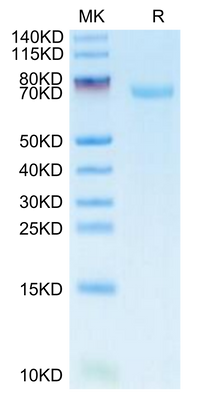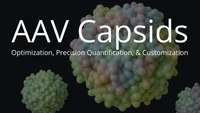The New Frontier in SCLC Treatment: 4 Antigens Driving Antibody Innovation
By Tingxu Chen
Small cell lung cancer (SCLC) remains one of the most aggressive and lethal forms of lung cancer with limited treatment options and poor prognosis, accounting for 15% of current lung cancer patient population (Figure 1). In recent years, advances in antibody-based drug development have opened new avenues for targeted therapy in SCLC. Among these, delta-like ligand 3 (DLL3), seizure-related 6 homolog-like (SEZ6L), B7 homolog 3 (B7-H3), and trophoblast cell surface antigen 2 (TROP2) have emerged as promising surface antigens due to their high expression in SCLC and limited expression in normal tissues. This review summarizes the current research and clinical landscape of antibody therapeutics targeting these four molecules, discussing their mechanisms of action, trial progress, and potential challenges.
Figure 1. Classifications of lung cancer [1]. Picture Resources: Lung Cancer Foundation of America.
Target Overview
DLL3 (Delta-like ligand 3) is a member of the Notch ligand family, functioning as an atypical ligand that negatively regulates the Notch signaling pathway. DLL3 is primarily localized in the Golgi apparatus and inhibits the pathway in a cell-autonomous manner during embryonic development. In cancer, particularly SCLC, DLL3 is highly and selectively expressed on the surface of tumor cells while being largely absent from normal adult tissues. This restricted expression profile makes DLL3 an attractive target for therapeutic development. It has been explored in clinical trials using various modalities, including antibody-drug conjugates (ADC), bispecific T-cell engagers (TCE), and CAR-T cell therapies2,3.
SEZ6 (Seizure-related 6 homolog) is a type I transmembrane protein implicated in neuronal development, synapse formation, and possibly in proteolytic signaling pathways, although its precise biological functions remain incompletely defined. Originally studied in the context of the central nervous system, SEZ6 has recently gained attention in oncology due to its upregulation in neuroendocrine tumors, particularly SCLC. It shows limited expression in normal adult tissues, which contributes to its appeal as a potential tumor-specific antigen. Preclinical studies have identified SEZ6 as a promising target for antibody-based therapies, including ADCs, which are now being explored in early-phase clinical development for SCLC4,5.
B7-H3 (CD276) belongs to the B7 family of immune checkpoint molecules and modulates T-cell responses. Although the exact receptor and signaling mechanisms of B7-H3 remain elusive, it is known to contribute to immune evasion and may also support tumor cell proliferation, invasion, and angiogenesis. B7-H3 is overexpressed in a wide range of solid tumors, including SCLC, while its expression in normal tissues is relatively limited. This differential expression, coupled with its role in immune suppression, has spurred the development of several B7-H3-targeted therapeutic strategies, including ADCs, bispecific antibodies, and CAR-T cell therapies, which are currently under clinical investigation6,7.
TROP2 (Trophoblast cell surface antigen 2), or TACSTD2, is a transmembrane glycoprotein involved in cell signaling, adhesion, and proliferation. It is frequently upregulated in a broad spectrum of epithelial cancers and is associated with increased tumor aggressiveness, metastasis, and poor clinical outcomes. In SCLC, TROP2 is often overexpressed and has emerged as a promising therapeutic target. The most notable TROP2-targeted therapy is sacituzumab govitecan, an FDA-approved antibody-drug conjugate that delivers the cytotoxic payload SN-38. While sacituzumab govitecan is approved for use in other epithelial tumors such as triple-negative breast cancer, its utility is currently being explored in SCLC through ongoing clinical trials8,9.
Clinical Trial Landscape
DLL3-targeting therapies have shown mixed results in clinical development. Rovalpituzumab-tesirine (Rova-T, or ABBV-321, AbbVie) initially generated interest but ultimately failed in Phase III trials due to significant toxicity10,11. Newer approaches include bispecific T-cell engagers such as HPN328 (Harpoon Therapeutics) and AMG 757 (Amgen), both of which target DLL3 and CD3. AMG 757 has shown early signs of clinical efficacy with manageable toxicity in ongoing trials while HPN328 is currently being evaluated in Phase I/II studies12,13.
SEZ6-based therapies remain in the preclinical stage but are gaining momentum. Antibody-drug conjugates (ADCs) and chimeric antigen receptor T (CAR-T) cells targeting SEZ6 are undergoing laboratory development, with no clinical trials yet initiated14. However, the increasing interest in SEZ6 as a tumor-specific antigen suggests that investigational new drug (IND) applications may be filed in the near future.
B7-H3-directed therapies are more advanced in clinical testing. MGC018 (Macrogenics), a B7-H3-targeting ADC, is currently in a Phase I/II trial for SCLC and other indications. Enoblituzumab (Macrogenics), a monoclonal antibody against B7-H3, has been tested in several solid tumors and may be expanded to include SCLC15,16. Additionally, radioimmunoconjugates such as 131I-omburtamab (Y-mAb Therapeutics), initially developed for neuroblastoma, show potential for broader application, possibly including SCLC16.
TROP2-targeted agents are also under active investigation in SCLC. Sacituzumab govitecan (Gilead Sciences), an FDA-approved ADC for other epithelial cancers, is now being evaluated in SCLC patients in trials18. Another promising TROP2-directed ADC, datopotamab deruxtecan (Dato-DXd, Daiichi Sankyo/AstraZeneca), is in clinical trials and includes cohorts for SCLC among other tumor types, reflecting its broad therapeutic potential19.
|
Target |
Drug Name |
Modality |
Sponsor |
Trial Phase |
Notes |
|
DLL3 |
Rova-T (Rovalpituzumab Tesirine) |
ADC |
AbbVie |
Phase III (terminated) |
Failed due to toxicity; no survival benefit |
|
DLL3 |
AMG 757 |
DLL3 x CD3 BiTE |
Amgen |
Phase I |
Early activity with durable responses |
|
DLL3 |
HPN328 |
TriTAC-XR (DLL3 x CD3) |
Harpoon Therapeutics |
Phase I/II |
Ongoing, SCLC cohort showing tolerability |
|
B7-H3 |
MGC018 |
B7-H3 ADC |
MacroGenics |
Phase I/II |
Investigated in solid tumors incl. SCLC |
|
B7-H3 |
Enoblituzumab |
mAb (Fc-enhanced) |
MacroGenics |
Phase I |
In combo with checkpoint inhibitors |
|
B7-H3 |
Omburtamab-131I |
Radioimmunotherapy |
Y-mAbs Therapeutics |
Early trials |
Being explored in CNS tumors, potential cross-over for SCLC brain mets |
|
TROP2 |
Sacituzumab Govitecan (IMMU-132) |
ADC (TROP2-SN38) |
Gilead Sciences |
Phase II |
Evaluated in SCLC after prior chemo |
|
TROP2 |
Datopotamab Deruxtecan (Dato-DXd) |
ADC (TROP2-DXd) |
Daiichi Sankyo/AstraZeneca |
Phase I/II |
Broad basket trial includes SCLC arms |
Table 1. Current clinical trials of DLL3, B7-H3 and TROP2 for SCLC indication.
Challenges, Opportunities, and Future Directions
While antibody-based therapies show promise SCLC treatments, several challenges hinder their efficacy. Tumor heterogeneity, low antigen density, and off-tumor expression—particularly with SEZ6 and B7-H3—can limit therapeutic impact and raise safety concerns. Risks are also in ADCs such as neutropenia and liver toxicity, and the immunosuppressive tumor microenvironment may dampen the effectiveness of immune-cell engagers.
Despite these hurdles, opportunities lie in rational combination therapies (e.g., ADCs with immune checkpoint inhibitors), improved payload design, and next-generation bispecifics. Future efforts should focus on biomarker-driven patient selection, novel formats like masked antibodies and conditionally activated ADCs, and deeper exploration of underdeveloped targets such as SEZ6. Continued investment in DLL3 and TROP2 ADCs, particularly in relapsed SCLC, is expected.
KACTUS Solutions for SCLC research
KACTUS is proud to support antibody drug research and development by providing high-quality TROP2, DLL3, SEZ6, and B7-H3 recombinant proteins, as well as offering SLC protein expression services for more tailored research needs. With a commitment to scientific excellence and product consistency, KACTUS aims to accelerate the discovery and optimization of next-generation therapeutics for SCLC as well as other indications:
Product Validation Data
Immobilized Human DLL3, His Tag at 0.1 ug/mL (100 ul/well). Dose response curve for Anti-DLL3 Antibody, hFc Tag with the EC50 of 2.6 ng/ml determined by ELISA
Immobilized Human SEZ6, His Tag at 1 ug/ml (100 ul/well) on the plate. Dose response curve for Anti-SEZ6 Antibody, hFc Tag with the EC50 of 9.0 ng/ml determined by ELISA
Immobilized Human B7-H3, His Tag at 1 ug/ml (100 ul/Well) on the plate. Dose response curve for Anti-B7-H3 Antibody, hFc Tag with the EC50 of 9.9 ng/ml determined by ELISA
Immobilized Human TROP-2, His Tag at 0.5 ug/ml (100 ul/Well). Dose response curve for Anti-TROP-2 Antibody, hFc Tag with the EC50 of 2.2 ng/ml determined by ELISA
Ordering Information
|
Target |
Cat. No. |
Product Name |
Species |
Tag |
|
B7-H3 |
Human B7-H3/CD276 Protein |
Human |
C-His |
|
|
Human B7-H3/CD276 Protein |
Human |
C-hFc |
||
|
FITC-Labeled Human B7-H3/CD276 Protein |
Human |
C-hFc |
||
|
Biotinylated Human B7-H3/CD276 Protein |
Human |
C-His-Avi |
||
|
Biotinylated Human B7-H3/CD276 Protein |
Human |
C-hFc-Avi |
||
|
Human B7-H3 (4lg)/B7-H3b Protein |
Human |
C-hFc |
||
|
FITC-Labeled Human B7-H3 (4lg)/B7-H3b Protein |
Human |
C-hFc |
||
|
BH7-HM43B |
Human B7-H3 (4lg)/B7-H3b Protein |
Human |
C-His-Avi |
|
|
Biotinylated Human B7-H3 (4lg)/B7-H3b Protein |
Human |
C-His-Avi |
||
|
Cynomolgus B7-H3 (4lg)/CD276 Protein |
Cynomolgus |
C-His |
||
|
Mouse B7-H3 (2lg)/CD276 Protein |
Mouse |
C-His |
||
|
DLL3 |
Human DLL3 (27-215) Protein |
Human |
N-His-Flag |
|
|
Human DLL3 Domain (311-427) Protein |
Human |
C-His |
||
|
Human DLL3 Domain (311-492) Protein |
Human |
C-His |
||
|
Human DLL3 Protein |
Human |
N-His |
||
|
Biotinylated Human DLL3 Protein (Primary Amine Labeling) |
Human |
N-His |
||
|
Human DLL3 Protein |
Human |
C-hFc |
||
|
DLL-HM4D1 |
Human DLL3 Domain (311-479) Protein |
Human |
C-His-Avi |
|
|
Biotinylated Human DLL3 Domain (311-479) Protein |
Human |
C-His-Avi |
||
|
Human DLL3 Domain (352-479) Protein |
Human |
C-His-Avi |
||
|
Biotinylated Human DLL3 Protein |
Human |
C-His-Avi |
||
|
Cynomolgus DLL3 Protein |
Cynomolgus |
C-His |
||
|
Mouse DLL3 Protein |
Mouse |
C-His |
||
|
Rhesus macaque DLL3 Protein |
Rhesus macaque |
N-His |
||
|
SEZ6 |
Human SEZ6 Protein |
Human |
C-His |
|
|
Human SEZ6 Protein |
Human |
C-hFc |
||
|
Human SEZ6 Sushi4 Domain Protein |
Human |
C-hFc |
||
|
Biotinylated Human SEZ6 Protein |
Human |
C-His-Avi |
||
|
Human SEZ6L Protein |
Human |
C-His |
||
|
Human SEZ6L2 Protein |
Human |
C-His |
||
|
Biotinylated Human SEZ6L2 Protein |
Human |
C-His-Avi |
||
|
Cynomolgus SEZ6 Protein |
Cynomolgus |
C-His |
||
|
Mouse SEZ6 Protein |
Mouse |
C-His |
||
|
Mouse SEZ6L2 Protein |
Mouse |
C-His |
||
|
Rat SEZ6 Protein |
Rat |
C-His |
||
|
TROP2 |
Human TROP-2/TACSTD2 Protein |
Human |
C-His |
|
|
Human TROP-2/TACSTD2 Protein |
Human |
C-hFc |
||
|
Biotinylated Human TROP-2/TACSTD2 Protein |
Human |
C-His-Avi |
||
|
Cynomolgus TROP-2/TACSTD2 Protein |
Cynomolgus |
C-His |
||
|
Mouse TROP-2/TACSTD2 Protein |
Mouse |
C-His |
||
|
Rat TROP-2/TACSTD2 Protein |
Rat |
C-His |
References
-
Rudin, C. M., et al. (2017). Rovalpituzumab Tesirine, a DLL3-Targeted Antibody–Drug Conjugate, in Recurrent Small-Cell Lung Cancer: A First-in-Human, First-in-Class, Open-Label, Phase 1 Study. The Lancet Oncology, 18(1), 42–51. doi:10.1016/S1470-2045(16)30565-4
-
Saunders, L. R., et al. (2015). A DLL3-targeted antibody–drug conjugate eradicates high-grade pulmonary neuroendocrine tumor–initiating cells in vivo. Science Translational Medicine, 7(302), 302ra136. doi:10.1126/scitranslmed.aac9459
-
Cai, W., et al. (2021). Cell surface protein profiling identifies specific markers of neuroendocrine subtypes of small cell lung cancer. Nature Communications, 12, 1362. doi:10.1038/s41467-021-21587-y
-
Guo, B., et al. (2023). Development of SEZ6-targeted antibody-drug conjugates for the treatment of small cell lung cancer. Molecular Cancer Therapeutics, 22(1), 62–72. doi:10.1158/1535-7163.MCT-22-0382
-
Picarda, E., et al. (2016). Molecular pathways: targeting B7-H3 (CD276) for human cancer immunotherapy. Clinical Cancer Research, 22(14), 3425–3431. doi:10.1158/1078-0432.CCR-15-2428
-
Du, H., et al. (2018). Targeting B7-H3 via chimeric antigen receptor T cells for the treatment of solid tumors. Clinical Cancer Research, 24(14), 3529–3541. doi:10.1158/1078-0432.CCR-17-3210
-
Goldenberg, D. M., et al. (2015). Sacituzumab govitecan, a novel ADC targeting Trop-2 for the treatment of diverse epithelial cancers. Molecular Cancer Therapeutics, 14(11), 2630–2639. doi:10.1158/1535-7163.MCT-15-0150
-
Zhang, H., et al. (2021). TROP2 expression and its therapeutic value in small cell lung cancer. Journal of Thoracic Oncology, 16(6), 968–981. doi:10.1016/j.jtho.2021.02.017
-
Rudin CM, Pietanza MC, Bauer TM, Ready N, Morgensztern D, Glisson BS, et al. Rovalpituzumab Tesirine, a DLL3-Targeted Antibody–Drug Conjugate, in Recurrent Small-Cell Lung Cancer: A First-in-Human, First-in-Class, Open-Label, Phase 1 Study. Lancet Oncol. 2017;18(1):42–51.
-
Morgensztern D, Besse B, Greillier L, Zalcman G, Krzakowski M, Szczesna A, et al. Efficacy and Safety of Rovalpituzumab Tesirine in Third-Line and Beyond DLL3-Expressing SCLC: Results From the TRINITY Study. J Thorac Oncol. 2019;14(10):1811–1819.
-
Amgen. A Study of AMG 757 in Participants With Small Cell Lung Cancer and Other Neuroendocrine Cancers. ClinicalTrials.gov Identifier: NCT03319940. [Internet]. Available from: https://clinicaltrials.gov/ct2/show/NCT03319940
-
Harpoon Therapeutics. Study of HPN328 in Patients With Advanced Cancers Associated With Expression of DLL3. ClinicalTrials.gov Identifier: NCT04471727. [Internet]. Available from: https://clinicaltrials.gov/ct2/show/NCT04471727
-
AACR Annual Meeting 2023. Abstract #3458: SEZ6 identified as a potential therapeutic target for neuroendocrine lung tumors using proteogenomic approaches. AACR 2023.
-
Powderly JD, Patel MR, Siegel BA, et al. A Phase 1/2 Study of MGC018, a B7-H3-Targeted ADC, in Patients With Advanced Solid Tumors. J Clin Oncol. 2021 ASCO Meeting Abstracts;39(15_suppl):TPS2662.
-
Makker V, Taylor MH, Rasco D, Dutcus CE, Wu J, Rha SY, et al. Enoblituzumab (MGA271), an Fc-Optimized Anti-B7-H3 Monoclonal Antibody: Safety and Activity in Tumors Including Checkpoint-Inhibitor Resistant Melanoma and Squamous Cell Carcinoma of Head and Neck. Clin Cancer Res. 2019;25(7):2174–2185.
-
Y-mAbs Therapeutics. 131I-omburtamab in Patients With CNS/Leptomeningeal Metastases. ClinicalTrials.gov Identifier: NCT04620733. [Internet]. Available from: https://clinicaltrials.gov/ct2/show/NCT04620733
-
Gilead Sciences. Study of Sacituzumab Govitecan in Solid Tumors Including Small Cell Lung Cancer (TROPiCS-03). ClinicalTrials.gov Identifier: NCT05658152. [Internet]. Available from: https://clinicaltrials.gov/ct2/show/NCT05658152
-
Daiichi Sankyo. A Study of Datopotamab Deruxtecan in Participants With Advanced Non-Small Cell Lung Cancer (TROPION-PanTumor01). ClinicalTrials.gov Identifier: NCT03401385. [Internet]. Available from: https://clinicaltrials.gov/ct2/show/NCT03401385
















